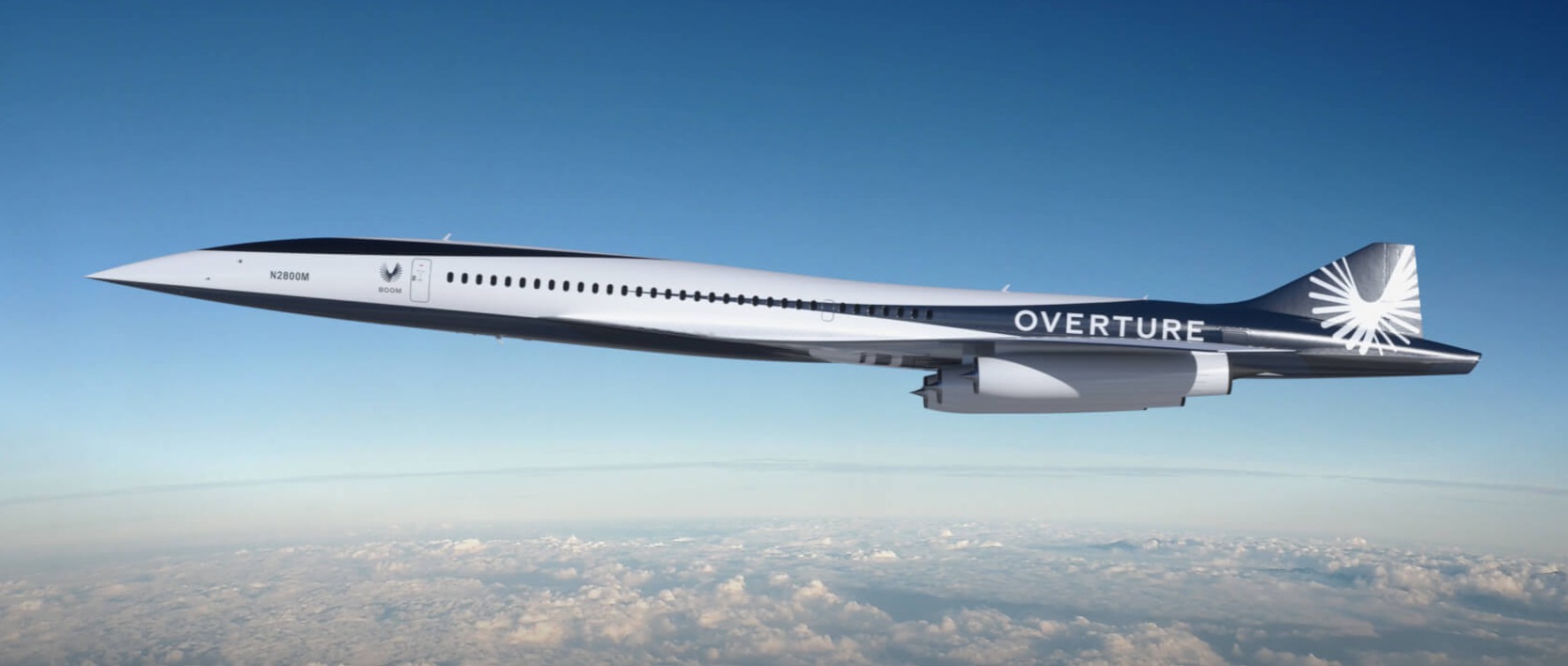In the year 2029, you can fly from London to New York in about three and a half hours – today it takes about eight hours. It almost sounds too good to be true, but that is nevertheless what the aircraft manufacturer, Boom Supersonic, is promising with its supersonic airliner Overture.
Boom Supersonic, a company in the US state of Colorado, aims to recreate commercial supersonic aircraft – a category of aircraft that has not existed since the Concorde jet was retired 20 years ago in 2003.
With Overture, air travel will have a renaissance, both in terms of speed, safety and sustainability. Overture will be able to fly at twice the speed of today’s airliners. In addition, Overture is designed to fly exclusively on the 100% sustainable aviation fuel, SAF.
According to Blake Scholl, Boom Supersonic’s founder and CEO, it’s about bringing us closer together.
“We’ve set out with a really big, audacious goal of creating the first supersonic airliner that tens of millions of people can fly on,” Scholl told CNN.
Supersonic Jet is faster than the speed of sound
However, supersonic aircraft are not a new phenomenon. Most fighter aircrafts are supersonic. Only once in history has a passenger plane been supersonic – the plane Concorde, which was inaugurated in 1976.
Concorde was developed by the British Aircraft Corporation and the French Aérospatiale and financed by the respective governments in 1962. The reason other airlines and countries did not invest in Concorde aircraft was the high operating costs. On March 2, 1969, the first test flight with Concorde was flown.
After over 5,000 test flight hours, Air France and British Airways began operating scheduled flights with Concorde in January 1976.
Concorde flew at a top speed of Mach 2.04, which is more than 2,400 kilometers per hour and twice the speed of sound. At that speed, a flight from London to New York took less than 3 and a half hour.
Concorde had a passenger capacity of 100 people and consumed over 89,000 liters of fuel for a transatlantic flight. In comparison, a Boeing 747 has a capacity of more than 400 passengers and consumes around 59,000 liters over the same distance.
The plane tickets were therefore incredibly expensive. Only a few could afford and were willing to pay to fly at supersonic speeds.
The 1977 oil crisis drove global oil prices to unprecedented levels and made prices even higher.
Concorde goes down in history
Almost no one doubted the safety of the most tested jet aircraft – until July 25, 2000. On that fateful day, shortly after taking off from Charles de Gaulle Airport in Paris headed for JFK Airport in New York, an Air France Concorde aircraft broke up fire. It subsequently crashed into a hotel near the airport. Over 100 people lost their lives.
Following this accident, passenger numbers fell, which, like all other commercial aviation, was further affected by the attacks on 11 September 2001.
Maintenance costs for the Condorde were also increasing, and in 2003 British Airways and Air France announced that they would permanently discontinue all Concorde flights.
A total of twenty Concordes were built, including two prototypes and two test aircraft.
Concorde is an aircraft that goes down in history with a record of 2 hours, 52 minutes and 59 seconds between New York JFK and Heathrow. Today, a few of the remaining Concorde aircraft can be found on display in the UK, France and the US.
The dream of supersonic passenger planes
However, the dream of a supersonic passenger plane has never died for Blake Scholl since Concorde was retired.
He hopes to launch Overture commercially by 2029. Boom Supersonic recently revealed a number of new details about the technology behind Overture and future plans.
Overture is designed to carry 64-80 passengers at a speed of Mach 1.7 and an altitude of 18,300 meters, twice the speed and 50 percent higher altitude of current commercial aircraft such as the Boeing 787 and Airbus A350.
At that speed, Boom’s Overture aircraft can travel between London and New York in approximately 3.5 hours, cutting the journey time in half.
Blake Scholl has stated that Boom Overture fares will be much more affordable than Concorde – on par with today’s business class tickets.
Despite the first aircraft rolling out of the factory in 2026, three airlines have already placed orders. United Airlines, American Airlines and Japan Airlines together have booked a total of 130 orders, of which 35 are paid without refunds and 95 are pre-orders.
Boom is aiming for a first flight in 2027 and certification of its aircraft in 2029. Immediately after that, it will be ready to enter service.
However, Blake Scholl admits that their goals are difficult to achieve, but that he is pleased with the progress the company has made so far.
Complex process
“It’s a very complex process, but unlike electric aircraft or vertical takeoff and landing aircraft, we don’t need a whole new regulatory framework to be certified,” Scholl says to CNN.
“This is another airline,” he continues. “It just flies at a different speed.”
“But from a regulatory perspective, it’s the same safety standards and the same rules that already exist. We just have to follow them and prove that we can live up to them.”
Boom’s engine is called Symphony and was designed in collaboration with Florida Turbine Technologies. The engineers have worked on supersonic engines in fighter jets such as the Lockheed Martin F-22 and F-35.
Efficient but quiet
According to Scholl, the Overture was designed with a particular focus on noise, one of the Concorden’s biggest drawbacks.
“It is meant to be efficient in supersonic flight, but also quiet for takeoff and landing,” he says.
The engine will also be fully operational with SAF, Sustainable Aviation Fuel. SAF is a jet fuel that reduces carbon dioxide emissions by up to 80 percent, according to industry association IATA.

